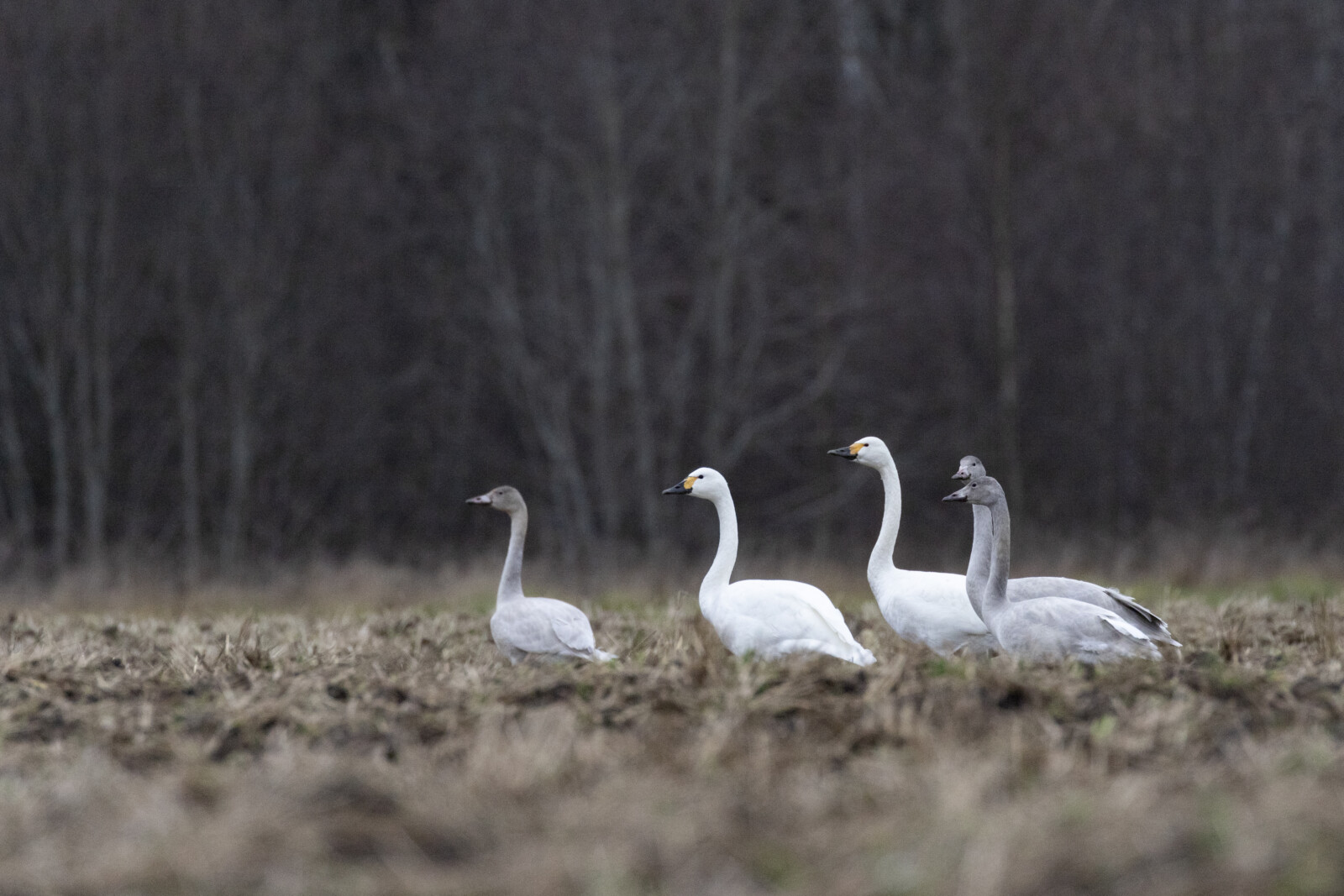Tundra swan
Tundra swan. Photo: Kauro Kuik
Introduction
Latin Cygnus columbianus
Estonian Väikeluik
Also known as: no known names
Status in Estonia
Non-breeding summer, migratory and wintering bird
Description
The tundra sawn is similar to the whooper swan but smaller, with a slightly shorter neck, a proportionally larger head, a stockier body and a shorter beak. The yellow part of the beak is significantly smaller and rhombic or round and rarely wedge-shaped and does not reach past the nostrils, with the black area making up most of the beak. The juvenile is greyish, with the same pattern on its beak as the adult bird, but black is replaced by pink and yellow is replaced by white.
Size
Body length 115–127 cm (body approx. 60 cm), wingspan 170–195 cm, body mass 7.9–8.4 kg.
Similar species
Whooper swan, mute swan.
Distribution
Our subspecies bewickii breeds on the tundras near the Arctic Ocean and winters in Northwest Europe. It is a common migratory bird in Estonia, which may also winter on occasion.
Population
It does not breed in Estonia, a common migratory bird.
Occurrence in Estonia
It appears during migration from April to May and October to November. The wintering population is 5–30.
Diet
It is a herbivore.
Habitat
During migration stopovers, it spends time on the coast as well as inland fields and wetlands.
Nesting
The female lays 3–5 yellowish-white eggs in a nest composed of twigs, moss, grass and hay towards the end of May or June and incubates them for 29–30 days. The male bird protects both the nest and its territory at the same time. The chicks are nidifugous, which means they can find food on their own after only a few days. Both parents assist them in their search for food. Chicks are able to fly at 40–45 days old. They remain at their nest site until the end of August. The chicks stay with their parents over the winter and occasionally the previous year’s chicks join them.
Conservation status and protection
It belongs to the protected species of category II. Foxes, Eurasian otters, minks, bears and gulls all pose a threat to the eggs and young.
Distribution and population in Lääne County
Matsalu and Haapsalu bays in Lääne County are vital feeding grounds for tundra swan throughout their migration. In the spring and autumn, almost one-third of all European swans stop at these two wetlands.
The spring migration of tundra swans is most frequent in early and mid-April, while the autumn migration begins at the end of September and lasts until October.
